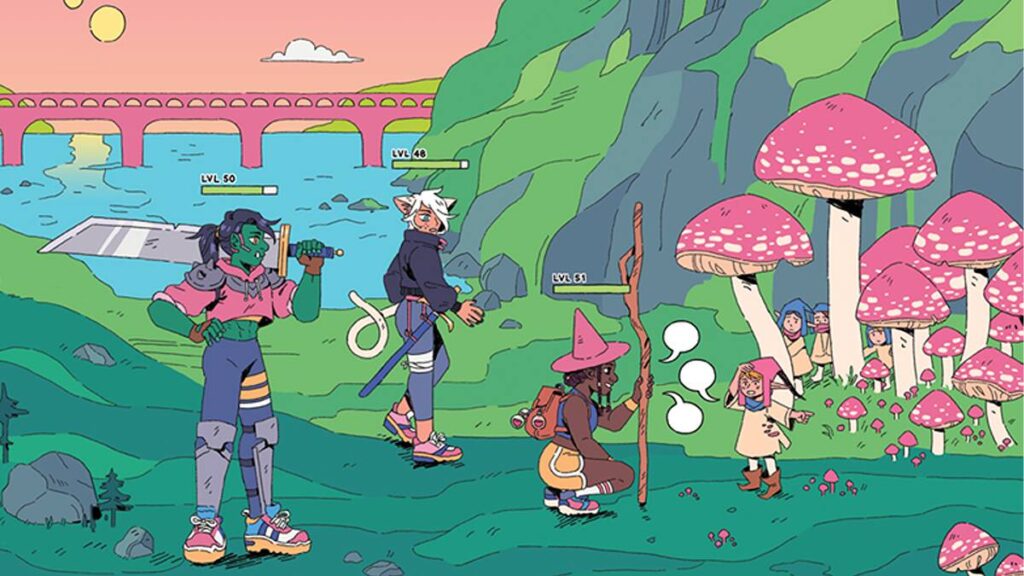I’m on a study project to improve my understanding of roleplaying games. To this end, I already have two reading projects, A Game Per Year and An Adventure Per Year. This is the third, with the goal of reading or playing 52 games made in the last few years. Originally I considered making this “A New RPG Per Week” and that’s where the number 52 comes from, even though a weekly schedule is probably not within my abilities.

.dungeon is a roleplaying game about playing retro digital roleplaying games. As a player, you’re playing a player who plays a character. While exploring the game, you meet NPCs who represent the kind of static supporting characters you see in digital roleplaying games. You can also meet other player characters, like in an MMO. These are not the same as the characters of the players you’re playing with. Rather, they’re essentially NPCs who are designated in the fiction of the game as player characters because they have players, even though of course in reality they don’t.
As you can see, explaining the levels of meta in .dungeon gets complicated fast! Still, it feels like it’ll become intuitive quickly enough at least for those of us who have played a lot of digital roleplaying games.
The metafictional nature of the game is reflected in the stats your character has. One is Meta, which represents your knowledge of the game. If you succeed with Meta, you can know the location of a specific NPC, for example. Another stat is System, which represents your skill and knowledge with the game’s systems such as climbing and combat.
The group has a collective stat called Connection which gets whittled down when they lose various contests. If Connection goes to zero, the game ends for these characters. I like the idea of collective hit points a lot. I don’t think I’ve seen it anywhere before!
The character classes also play with the border between the meta and the fiction. One is The Troll who can make exaggerated false statements and thus goad NPCs into revealing information when they feel compelled to correct.
The presentation of the game is visually highly compelling, drawing on the nostalgia we feel for older digital roleplaying games. We are transported into that milieu even though the game’s text is mainly concerned with systems.